|
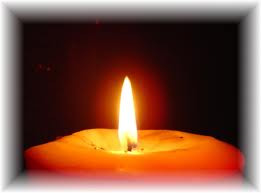
Hope is a state of being, an intangible experience.
We know it is vital and informs our lives even as it remains
indefinable. In this it is like energy – we are each intimately
familiar with it yet no one knows what it is. It is a paradox.
As with energy, we are keenly sentient of the
presence and absence of hope in our lives. When we are aware of hope we
speak of being filled with hope and say, “I feel hopeful”. When we
are aware of the lack of hope we say, “Every thing is hopeless. I
despair”. Our sensation of hope continually varies, just as energy is
continuous change. What seems hopeless in one moment can seem hopeful in
the next. What one person sees as “real hope” another person sees as
“false hope”. Some say, “God is hope” while others say, “God
does not exist” and yet they may remain hopeful. Hope, like energy,
seems to be all in the experience and thus it cannot be fully expressed
in words. Indeed it may be beyond any symbol.
So why and how do we write about hope – surely it
is a hopeless endeavour? If hope is indeed a paradox like energy, then
it is beyond the bounds of thought. Thought cannot alone embrace how
something can simultaneously be what it is not. Yet somehow we survive
in a world of paradox in which darkness is of light, silence is of
sound, birth is of death, the in-breath is of the out-breath etc.
Somehow we transcend the limitations of thought and live with paradox.
We survive but how?
The Power of Symbols
Our ability to communicate using symbols is one
reason we survive, a symbol being a shared crystallized quantum of
meaning. A
symbol is something that represents something else by association,
resemblance, of convention. A symbol is a living thing, arising as it
gathers meaning and passing as it loses meaning.
Every sentient form uses symbols to survive and
procreate. That is how cells have sustained their fundamental form
through a billion years of galactic, solar, tectonic, atmospheric and
other epic change. Communication within cells and between cells enables
the living fabric of the planet. We are informed. We are information.
Information is physical, a force, and continuously reshapes us,
simultaneously enabling us to reflect and be in harmony with reality -
the universal change. It charges us with meaning and we experience
vitality. We are livened in the universal potential.
Information can also reshape us in ways that
disable our capacity to reflect and be in harmony with reality.
Unsustainable information works to reshape an organism or species so it
acts in ways that are dissonant with reality. This is manifest, for
instance, in the aging process of DNA, especially mitochondrial DNA, as
the quality of their information diminishes. Our cells tend to
experience a loss of meaning and thus vitality as the quality of their
information decays.
The discussion this far may seem obvious and
unhelpful in our quest to know and enjoy hope. And, of course, these are
mere thoughts in the form of words. However the possibility now occurs
that we are more mindful of the vital role of symbols in our lives and
the value of conserving their potential to sustain us. For millennia
sages such as Confucius have advised that our prime civic act is “the
correction of language use”.
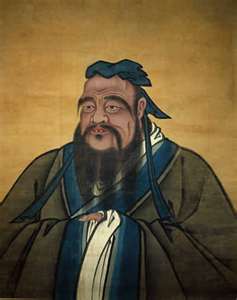
Tzu Lu said:
"The ruler of Wei wants you to become a member of his government.
What will you work on first?" Confucius said: "The correction
of language use [rectification of names]." Tzu Lu said: "You
don't mean it! Why should that be your first priority?" Confucius
said: "If language is not used correctly, then what is said won't
be understood. If what is said is not understood, then the work of the
state cannot be carried out successfully. If the work of the state
cannot be carried out successfully, then the rules of propriety will not
be observed and music [that is, culture] will not develop. If propriety
does not prevail, and if music [that is, culture] does not develop, then
criminal punishments will not be imposed in accordance with justice. If
criminal punishments are unjust, then the people will be disoriented in
their actions. Therefore, the Chun-Tzu must see to it that language is
used correctly and that what he says is carried out in practice."
They advise that if we fail to care for
our language, then all our endeavours fail us. They were keenly aware of
the limitations of thought and thus words. Still they put great store in
sustainable language, in careful symbol use. My brief reading of their
works suggests they realised the paradox of the human condition: the
more we embrace our limitations the more we are liberated from them. It
is in this spirit that I continue.
I have suggested that we are information, which we
communicate using living things called symbols, approximations of
reality. We can each be seen as an Information Being, just as we can be
seen as a Thermal Being, a Carbon Being, an Electrical Being etc. We are
each unique, formations of knowledge. We are each discrete fluxes of
information, oscillating in the ebb and flow of the greater flux of
information, which is the universal veneer of life shimmering around our
planet. We arise from the sentience of Earth and pass into it.
The Human Condition
I will not attempt to discuss the hows and whys of
our emergence as unique, discrete Information Beings. That is beyond the
realms of the deepest psychology and quantum physics. However it is
perhaps valuable in this short essay on hope to discuss the general
human condition and how we process information.
In brief: in any moment a human being is sentient
of perhaps more than 50 billion movements or transfers of information.
The human body alone consists of ten trillion cells and we host perhaps
a hundred trillion microbe cells. Almost all this immense sentience
occurs at a subconscious level of a human being, the information
processing being governed by patterns of behaviour and structures formed
over eons. In any moment we are conscious of perhaps two or three
thousand of those myriad, myriad sensations. Consciousness is a trace
element of our being.
With human consciousness comes self-consciousness,
thought and the associated sensations of “I”. Perhaps these aspects
of our psyche can usefully be illustrated with this image: they are the
conglomeration of the brief sparkles on the wave tips of the vast ocean
of the subconscious information flux.
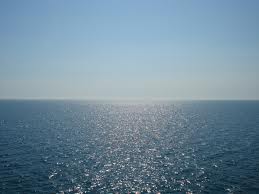
The “I” can register the sparkles of this
subliminal psychic ocean to know it exists and yet can never be part of
our great subconscious being even though it born of it. This too is a
paradox, which means it is beyond the realm of thought.
Similarly thought and the sense of “I” affect our interactions with
other dimensions of our existence such as the oceans of water on our
planet and the oceans of stars in the sky. We know they exist and we are
of them. However our conscious knowledge forms a schism in our
experience of them.
Previous to the Industrial Revolution our ancestors
embraced this schism. We see this in the
etymology of the “science” symbol:
“…from O.Fr. science,
from L. scientia "knowledge,"
from sciens (gen. scientis),
prp. of scire "to know," probably
originally "to separate one thing from another, to
distinguish," related to scindere
"to cut, divide," from PIE base *skei-
(cf. Gk. skhizein "to split, rend,
cleave," Goth. skaidan, O.E. sceadan
"to divide, separate;"… Main modern (restricted) sense of
"body of regular or methodical observations or propositions ...
concerning any subject or speculation" is attested from 1725; in
17c.-18c. this concept commonly was called philosophy.”
We see here an evolution in the use of the
“science” symbol that has arguably reflected and generated the
excesses of the Industrial Revolution. Previously science (knowledge)
was associated with a state of being which includes sensations of
division or separateness. However as the Industrial Revolution evolved
the “science” symbol was stripped of this deep meaning of the human
condition and redefined as simply a way of thinking. This neutering of
the ‘science” symbol can be traced to Descarte’s statement, “ I
think, therefore I am”. Thought came to dominate our culture and
information processing i.e. “science” became an intellectual
activity rather than a profound moral process informing our actions.
The
Ego
Some symbolise this trace conglomeration of
activity involving thought and sensations of “I” at the interface of
our subconscious and conscious as the “ego”, which is the Latin word
for “I”. The ego, which
exists in all human beings, is characterised by the sensation of
separation from the universal flux. It is a paradox in that it exists
because of its knowledge of reality even as that knowledge disconnects
us from reality.
To reiterate, thought cannot countenance paradox
and thus, being bound by thought, the ego cannot truly reflect on
itself. The ego arises with sensations of disconnection from all and
passes with sensations of connection with all. Thus the ego is
characterised by sensations of dread of mortality and stewardship, for
these are reminders of our connection with all, with reality. In reality
all things arise and all things pass in the universal flux.
The ego is a potent force in our lives. It acts as
a gatekeeper at the borders of our conscious and subconscious, affecting
the flow of information between these two realms. It acts as a
repository and controller of our knowledge and associated symbol use. If
we are not careful it can act as the sole repository and controller of
our sensibility, which is dangerous because the ego is inherently
self-interested and lacking sensations of stewardship. Without care the
ego can easily destroy us.
The questions arise:
How do we care so we are sustained as human beings and as a species?
What is the nature of hope and its role in our survival?
A first step to answering these questions is to
embrace the existence of the ego and its limitations. I have alluded to
some of those limitations – its fundamental abhorrence of notions of
change (mortality and stewardship) plus its inability to reflect on
itself and its integral thought process. Perhaps its greatest limitation
and risk to us is, paradoxically, its incredible ingenuity.
With self-consciousness comes the capacity for
self-deceit. The ego, acting as it does at the interface of the vast
subconscious and the trace conscious elements of the human psyche is
capable of generating rationales and deceits that are literally
incredible, for they are unthinkable. We cannot be conscious of all the
myriad sensations associated with the processing of 50 billion pieces of
information in any moment. Our conscious knowledge of them tends to be
determined by the filter of the ego.
This is why we are capable of behaving in ways
contrary to our stated beliefs. Indeed it is eminently possible for
human beings to say one thing and act the opposite without even being
conscious of the contradiction. Such is the power of the ego in the
processing of our information. It can generate dangerous delusions and
immense misery. It can cause individuals and societies to despair and
perform self-destructive acts. Existence seems to lack meaning and they
experience hopelessness. Barbarism prevails.
Indeed as we contemplate the power of the ego it is
possible to feel somewhat hopeless. It may easily seem we are bound in
incredible ways in a fatal psychosis. How can we ever escape or fight
it? An insistent voice
within may well be saying this discussion is increasingly meaningless
and there are more urgent matters to attend to. That voice is of the ego
as it seeks continuous dominance of our lives.
However in the sensation of hopelessness a
possibility occurs: the potential to experience hope, just as we
experience light and sound more fully in their absence. In that
possibility is potential liberation from the demands and restrictions of
the ego and thought. This is the beauty of paradox. And as mentioned we
continually live with paradox.

The painter within us values dark and
light equally. The musician within us values sound and silence equally.
The philosopher within us values equally the yin and yang of the forces
of existence -including the forces of the ego and the non-ego.
Embracing the ego with all its limitations and
incredible ingenious trickery enables us to transcend it. The ego cannot
be fought or bought off or thought away. It can easily generate
sophisticated mechanisms and rationales that counter such attempts.
However it has no counter for the experience of compassion with its
properties of kindness, sharing, connection, humility, acceptance,
inquiry, generosity of time, tolerance and gentle humour.
The experience of compassion is the most potent
liberating force in our lives and enables us to enjoy the state of
being, which is science. Here the “science” symbol is used with its
fuller meaning: science is a moral state of being. In the state of
science we are enabled to develop all manner of arts – including
sustainable language and technology and civics in general. Here too the
“arts” symbol is employed with its fuller historic meaning: art is
skill, complete and suitable.
Transcendence through
physics
Which brings us to the question: if stewardship of
language is primary to our survival as a species, then how do we
transcend the deceits and self-interested dictates of the ego so we can
conserve the potential of language and be sustained? The answer
paradoxically lies in the ingenious and incredible capacities of the
ego. (Smile) It has generated a symbol that is as near as we have to a
universal law. The symbol is the Conservation Principle of Energy, which advises us that energy is so
bounteous it can usefully be considered a constant and it continuously
transforms. All is change. In brief, energy cannot be created or
destroyed though it constantly changes form.
Such a notion, with its intimations of the
mortality of the human form and reminders of our role as stewards of the
forms that sustain humanity, is an anathema to the ego. It works
strenuously to deny this principle of physics and thus it is probable
that no notion has been subject to such intense scrutiny during the
existence of human kind. The Conservation Principle of Energy has
endured despite countless, varied, passionate, ingenious attempts to
disprove it. No one has yet invented a perpetual motion machine. No one
has yet discovered the elixir of eternal youth. In our state of
uncertainty the principle is as near as we have to a universal law of
existence.
The Conservation Principle forms a great and wise
guide that presents us with choice. It liberates and offers us
transcendence. Societies that have chosen to embrace the insights of the
Principle have tended to be more resilient. Those that have chosen to
dismiss its insights have done so at their peril.
Hope is intimately associated with the sensations
of choice, transcendence and will power. At first glance there seems no
role for willpower and choice in our use of language because, as with
all, our use of symbols involves paradox. How we employ our symbols
reflects our state of being even as our use of them works to generate
our state of being. This presents us with a conundrum – one the ego
can easily exploit for its own narrow interests.
The Conservation Principle of Energy provides us
with a way of transcending this paradox. It reminds us of the immense
universal potential, which is energy, and how existence is continuous
change.We can choose to use language that reflects this reality. Our
symbol use will then tend to reflect and generate a state of being more
in harmony with the universal flux.
Or we can choose not to use language that is in
accord with the Conservation Principle. Always the ego is working in
most ingenious ways to deny the essential insights of the principle and
finds us ample reasons to ignore its wisdom.
However we have the choice and to the extent our
language is in harmony with the universal principles of physics we will
tend to be sustained. In this sense of choice we enjoy the sensation of
options. In being sustained we enjoy the sensation of bounty, of
possibility, of potential, of hope.
A practical guide to enjoying hope is summarised in
this statement:
A symbol used in
acceptance of change enhances the capacity of the user to mirror reality
and enjoy harmony. A symbol used in denial of change destroys the
capacity of the user to mirror reality and enjoy harmony.
Henceforth I will allude to this statement as the
Sustainability Principle of Energy until the statement is proven flawed.
The reality alluded to is the continuous universal
change, the constant transformation of all things, the grand flux of
existence.
In this reality human beings are transient forms,
as are all other forms. The universal flux provides the benchmark with
which we evaluate our use of symbols. To the extent our language
reflects the continuous transformation, we are more likely to be
sustained.

Energy, as manifest in a galaxy.
The universe contains around 50,000,000,000 galaxies,
each of which has between 100,000,000,000 and 1,000,000,000,000 stars.
Hope in the
"Energy" Symbol
Let us briefly evaluate our use of the “energy”
symbol as a practical example of this evaluation process. Is our culture
sustainable?
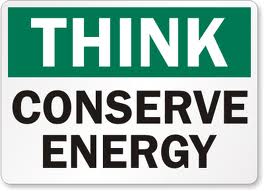 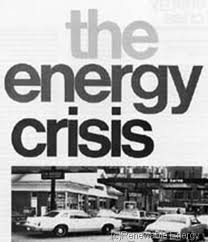  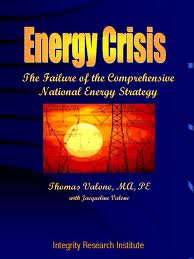
We commonly symbolise energy as failing us.
The Conservation Principle of Energy advises us
that energy is so bounteous it can be considered a constant and, by its
very nature, energy is conserved, sustained.
The language of our culture is in complete denial of the
principle and speaks of humans “conserving” and “sustaining”
energy”, of “energy failure”, of “wasting” and “losing”
energy, of “running out of energy” and “energy collapse”
etc. We speak of "energy crisis" rather than a
crisis in our use of energy.
*****

The "energy sector" or "energy industry.
The Conservation Principle advises us that energy
is manifest in myriad, continuously changing forms and though all are of
energy none is energy. The language of our culture is again in complete
denial of the universal change, for it commonly symbolises fossil fuels
and Bulk-generated electrical products as “energy”. In so doing we
fatally confuse energy with a form. As a consequence we tend to use that
form as though it is as bounteous as energy and not subject to
transformation. Often our use conveniently excludes the atmosphere from
the combustion equation.
*****
  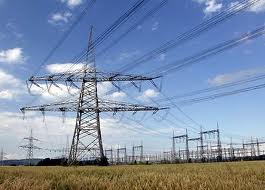 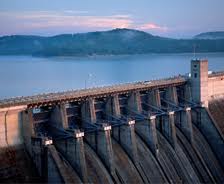
A search on "power industry" generates pages of these
associations.
The Conservation Principle advises that energy is
the potential of the universe(s) and that power is the measure of the
rate at which it is manifest. The language of our culture profoundly
confuses these symbols. Indeed our culture is based on the insane,
confused equation:
Energy = fossil fuels =
power = electricity = Bulk-generated electrical products
This is the equivalent of saying the potential of
the universe (energy) =finite forms (fossil fuels)= a measure (power) =
a non-existent form (electricity) = finite forms (Bulk-generated
electrical products).
*****
   
Our symbols confuse conserving valuable energy forms with conserving
energy
The Conservation Principle advises that it does not
matter how much energy we use but that we use it in ways that conserve
the flows and balances that sustain us all.
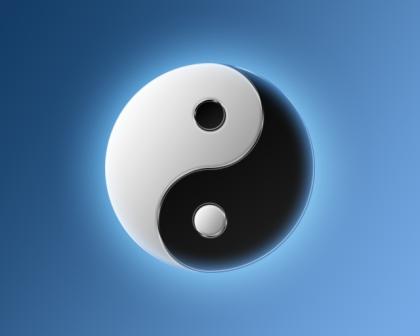 The yin yang symbol: the most
sustaining pictorial symbol in known history?
The yin yang symbol: the most
sustaining pictorial symbol in known history?
By contrast the language of
our culture associates energy efficiency with using less energy and
deprivation in general. Energy efficiency is symbolised as a cost and
“drag on the economy” rather than a creative, harmonious way of
being.
*****
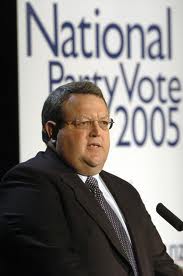   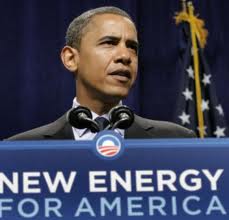
The ultimate denial of change: energy is not a resource.
NZ Minister of Energy and Reources (far left)
The Conservation Principle advises that energy is
sustained and inherently renewed. A resource is something that arises
again and again and again. Thus energy is the ultimate resource. Yet
nations such as New Zealand have Government Ministries of Energy and
Resources, which is complete denial of change and non-science. With the
excesses of the industrial Revolution any object that can be traded came
to be called a resource in the 1790s, even if it may not arise again in
the life of the planet.
*****
The Common Factor
The common factor in these symbol uses is the
consistent denial of the Conservation Principle of Energy and the
essential change of the universe(s). These uses all diminish the fuller
meaning of the symbols and thus act to prevent the greater manifestation
of the universal potential. This behaviour is a profound example of how
the ego can dominate our sensibilities and the result is we destroy many
of our most sustaining possibilities.
We, for instance, build vast centralized systems involving
incredibly wasteful, polluting uses of valuable finite minerals that
benefit a very few people for a very short period. We, for instance,
procreate without consideration of the limits of ecological systems to
sustain our children. We experience sensations of fear and deprivation
amidst plenty.
Indeed these symbol uses reflect and generate a
disconnection with reality such that we behave in truly delusional and
addictive ways. We experience false hopes. For instance, we believe a
sociopathic construct called “The Market” knows better than us and
acts as a steward for us.We “hope” technology will act as a steward
for us and counter our waste and pollution.
We call a diseconomy, a system founded in planned
inefficiency and obsolescence, an “economy”.
We symbolise those who most wastefully destroy
vital minerals and resources as “conservatives”.
As discussed, we redefine science as just a way of
thinking rather than a profound moral way of being.
We build huge credit, transport, agriculture and
other systems based on the delusion that there exists eternal mineral
oil at 0.1 cents a manhour of its energy equivalent. This undoubtedly
forms the greatest Ponzi in known history – no such material exists.
We symbolise fossil fuels and Bulk-generated
electrical products as “the energy sector” and the “energy
generators” while we slaughter our fellow human beings so as to
control “energy” and have “energy security”.
Hope in the
"Carbon" Symbol
Wherever we waste and pollute we find this
dissonant behaviour is reflected in our use of language. For instance
our abuse of our carbon potential is reflected in our belief in “zero
carbon” and “carbon neutrality”. These are denials of the reality
of carbon, the essential change which is the universal carbon flux. A
primary aspect of stewardship is the acknowledgement that no human
activity is neutral – it affects the universal flux for better or
worse.
Our abuse is reflected in our belief in “carbon offsetting” and
“carbon trading” and the Carbon Market as our salvation. This is a
classic abdication of our roles as stewards amidst the carbon flux.
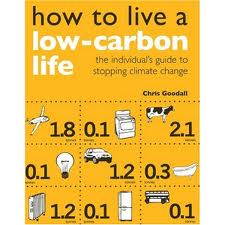  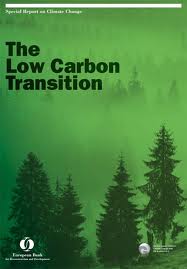 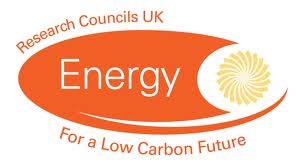 
We demonise carbon and speak of “fighting / combating / stopping carbon”
and of the need to aspire to a “low carbon economy”, a "zero
carbon state" and even a "post carbon world.
We are Carbon Beings and this association of carbon
with malignancy illustrates how the ego is well capable of generating
self-hatred in its denial of reality.
We speak of the need to “put a price on carbon”
rather than valuing carbon forms. We allow prices rather than values to
become the motivators of our behaviour, even if those prices are set at
insane levels by a few psychopathic merchant traders.
The reality is carbon is a universal element and
forms the basis of living cells. We are Carbon Beings existing in a
wonderful carbon flux, a vibrant interplay of carbon forms and flows. The carbon potential is what it says: potent with
possibility. To associate carbon with malignancy limits our potential
and, as suggested, is a form of self-hatred. Perhaps another name for
this state is hopelessness.
The reality of our carbon potential, as with
energy, is that it does not matter how much carbon we use but rather
that we realise the carbon potential with harmony. As Information
Beings, this realisation opens us to immense sustaining possibilities,
such as using carbon to store, transfer and process information,
electrical products, solar energy and other resources on an
unprecedented scale. In this context carbon is a foundation of life and
source of hope.
To reiterate: whenever we waste and pollute any of
our many potentials this unsustainable behaviour is manifest in our
symbol use. We fail to enjoy our potential.
Hope
in the “Electricity” Symbol
Another obvious example the psychological
phenomenon of denial of reality is our abuse of our electrical
potential. We employ the “energy”, “power” and “electricity”
symbols interchangeably in the insane equation mentioned earlier. The
reality of our electrical potential is that it is just one perspective
of existence.
And there is no such stuff as “electricity”! What does exist is a
wide range of electrical phenomena with completely variant properties,
each of which offers different potential uses. To symbolise one form
such as a small range of electric currents as “electricity” obscures
and denies us the awareness of the wonder of the universal electrical
interplay and marvellous possibilities.
Hope in the
"Solar" Symbol
Our prevailing abuse of our solar potential
demonstrates the scale of this behaviour of denial. Our solar potential
amounts to an average of 164 Watts per square meter over the entire
earth each 24 hours and there are myriad ways we can use it. Yet we are
almost blind and dumb to this immense potential. Our language is that of
a people who look to the ground only for sustenance. We symbolise a few
minerals of the Earth as “energy” but not our sun. We have
Government Ministers for “Energy and Minerals”, Agriculture, Forests
and even Ecology Conservation but never Ministers for conserving our
solar potential. This obsessive behaviour is manifest, for instance, in
the widespread design and use of dwellings that wastes and destroys our
solar potential on scale. The consequence is needless poverty, warfare
and pollution.
Hope in the Civilised
Use of Symbols
These examples of unsustainable symbol use remind
us of a general characteristic of our nature as Information Beings:
before we can use anything we need information about its existence. An
object cannot be manifest to us if we do not have a symbol expressing
its nature. Its potential cannot be revealed to us. This suggests a
general principle that sages such as Confucius alluded to. This advises
us that we maximise the possibility of sustained survival and enjoyment
of civilisation when we use language with care and conserve the
potential of our symbols.
Again this involves paradox that can be perhaps
illustrated with our use of the “energy” symbol. As discussed, our
culture commonly confuses energy with a few of the countless forms it
can be manifest in and this leads to extremely dangerous, ego-driven
behaviour. We are blinded by our language and deny the existence of
other forms of energy, each of which retains a wide range of potentials.
We are insensitive to the vitality of these other forms for we have
disassociated them with energy.
Stewardship involves giving each form of energy its
own symbol so its nature is revealed. Thus, for instance, the oil
produced in the earth is known as “mineral oil” and is distinguished
from oils derived from, for instance, vegetation. Each type of oil is a
unique form and our sustainable use of it requires differing ways of
stewardship.
The solid carbon elements of the earth are known as “coal”, which
reminds us it is a finite form that often must be combusted with air to
provide useful forms of energy.
The electrical products that are produced using
large devices such as dams, furnaces and industrial wind turbine
conglomerates are known as “Bulk-generated electrical products”, a
reminder they are finite forms and just one of a range of products such
as “Dwelling-generated electrical products”.
The paradox is that the more care we take to
symbolise each form of energy the less we will speak of energy.
Ultimately energy becomes associated with the sensation of the universal
potential. The symbol becomes a reminder and expression of the bounteous
nature of existence. This is because enhanced possibilities become
manifest with each careful refinement of our symbol for a form of
energy. In brief we experience a greater sense of potential,
possibility, options, bounty and freedom. This is the experience of
hope.
The same paradox occurs when we are mindful and
give care to conserving the potential of all our symbols, not just the
“energy” symbol. Another powerful example is the “power” symbol.
Power is the rate or measure at which the universal potential is
manifest. Power is not the
form being measured and all forms can be used as measures.
All manifestations of the universal potential, that
is all forms of energy, are forces of one kind or another, a force being
an amount of energy realised in a period of time. Thus, for instance,
the measure of the forces of an electrical current might be watts or
joules-second. The measures of the useful forces of a motor might be in
watts or horsepower (745.7 Watts) or manpower (75 Watts) or antpower or
elephantpower or foot-pounds-second or whatever.
Every form can be used as a measure of the universe
and by giving each measure its own symbol expressing its nature we are
reminded of the bounteous nature of energy. This is gift of care is
stewardship.
And each measure can be translated into any other
measure, as we have seen. This reminds us of the interconnected nature
of all forms as well as their immense variety and different potential.
Again the paradox, the greater the care we give to conserving the
potential of the “power” symbol the less we employ it while it
becomes an increasing reminder of the wondrous nature of energy, of
which it is the measure.
Conservation of the “electrical” and
“electricity” symbols is worthy of mention as electrical phenomena
are so potent with possibility in our society. An appreciation of this
potential is critical to the survival of humanity now the short era of
Cheap Mineral Oil/Gas has passed. Many of our contemporary systems are
thus at desperate risk of collapse.
When we care to explore existence from an
electrical perspective we find there exist a grand range of electrical
phenomena with great variance of characteristics. There are electric charges, electrical energy, electrons, electric current,
electric fields, voltage, electric power, electrical sparks,
electromagnetism, electrical science, electrodynamics and electrical
charge imbalance. There is bioelectricity, piezoelectricity,
triboelectricity (triboelectric effects), thermoelectricity, atmospheric
electricity and more.
In each differing electrical property is additional
potential for us to enjoy. As mentioned earlier, it is common to
symbolise Bulk-generated electrical products as “electricity” The
more we care to symbolise each phenomenon the greater our electrical
potential is revealed and, paradoxically, the less we will speak of
stuff called electricity.
One final example of this paradox of language
stewardship: the “carbon” symbol. Currently the discourse of carbon
in our culture is obsessive. I alluded earlier to how carbon is now
commonly associated with malignance. This is because of concern and
debate about the possibility that our combustion of fossil fuels may be
destroying the thermal balances of the atmosphere that sustain us. It is
also because some merchant traders believe they can trade on this
general concern for their private profit. Thus perverted notions of
carbon dominate our language.
The reality is that the carbon potential is vast
and can be manifest in myriad forms. We deny ourselves this great
potential when we call a few of the forms “carbon”. We are deprived
of many sustaining options and thus tend to experience sensations of
hopelessness. The more we are able to give each form of carbon its own
symbol the less we speak of carbon and yet the more we sense its
bounteous presence. In that sensation is the experience of hope.
Summary Ideas
This has been an exploration of how and why we
might write about hope. A summary of the key ideas includes the
following notions:
Information is physical and is a force. Thus its flows, balances and
impacts are also subject to the great principles of physics.
Without symbols life does not exist. A paradox of symbols is they
simultaneously reflect and generate our state of being. However we can
transcend this paradox by actively embracing the great principles of
physics, especially the Conservation Principle of Energy. This also
involves embracing the ego with its inherent tendency to deny the
essential advice of the Conservation Principle, which is that in reality
all things are continuously transformed, including human beings.
The ego fundamentally abhors notions of mortality and stewardship,
generating incredibly sophisticated rationales in its denial of them.
The experience of the state of compassion enables us to transcend the
incredible trickery of the ego and the schism formed by conscious
knowledge.
Compassion informs us so we can experience the state of science, which
in turn enables our use of knowledge to better reflect and be in harmony
with the universal flux. Compassion infuses information with enhanced
meaning and potential.
Perhaps that sensation of meaning and potential involves the experience
of hope?
With the summary in mind I will briefly discuss the
proposed Sustainability Principle of Energy.
A guide to
transcending in hope
The Sustainability Principle is founded in the great proven
principles of physics with the notion that energy is as bounteous as the
universe(s). It is a potent psychoanalytic tool that enables us to see
through the ingenious disillusions and “false hopes” generated by
the ego. The human psyche tends to consistency despite deceits of the
ego and the Sustainability Principle of Energy enables us to identify
and see through its incredible trickery. At the same time it provides us
with a wise guide to our use of symbols so we are better sustained.
You can view a sample index of the insights
provided by this psychoanalysis and guide at www.thesustainabilityprinciple.org
Symbol uses are categorised as to their harmony
with the Conservation Principle of Energy and the universal change it
advises us of. When our contemporary uses of our prime symbols are
analysed en masse then several intriguing and perhaps challenging
patterns become apparent:
- The
ego can easily make us our own worst enemy. The index reveals that
it is quite possible that we communicate our message very clearly
but it is not the message we think it is. Indeed it may be a most
contrary message to what we imagine it is. Passion and well-meaning
are insufficient, for they can easily be founded in self-deceits and
false hopes.
- Symbols
used in acceptance of change/stewardship open us to the greater
universal potential. By conserving the potential of symbols they in
turn provide us with enhanced perspectives of existence and greater
possibilities. We enjoy heightened sentience and wisdom. The
converse tends to be true when we use symbols in ways that deny
change/stewardship and fail to conserve their potential – and the
ego will generate ample deceits to convince us to deny reality and
abuse the potential of symbols. This denial tends to be a recipe for
misery, war and all manner of deprivation.
- A
pattern becomes evident in the ways symbols reflect and generate the
state of our institutions. The ego is present in every human being
with its elements of psychosis (the inability to truthfully reflect
reality) and pyschopathy (the inability to enjoy compassion). Modern
corporations are the near pure manifestation of these two elements
and this is reflected in their wholesale destruction of the
potential of our prime symbols. In this process they redefine prime
symbols such as “love”, “energy”, “power”, “carbon”,
“electrical”, “market”, “conservation’ and our other
prime symbol so as to reflect their own short-term interests,
thereby putting us all at risk. As a result these institutions,
especially private corporations, work to destroy the state of
science in our communities.
-
A
deeper pattern involves our perceptions of information. I alluded to
how the potential of the “science” symbol has been destroyed,
reflecting and generating the excesses of the Industrial Revolution.
The processing of information was stripped from its profound moral
basis and now science is defined merely as a way of thinking, a
distinct body of knowledge which is the domain of an elite of human
beings called “scientists”. Our society is now founded in the
grand self-deceit that science is a disconnected from our daily
activities.
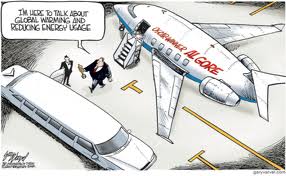 Our
brains are laced with sophisticated mirror neuron systems - our
actions are potent symbols. Our
brains are laced with sophisticated mirror neuron systems - our
actions are potent symbols.
- Within
this deeper pattern of behaviour a deep pattern of reaction can be
discerned. The emergence of the amoral rational of science with the
Industrial Revolution generated an ongoing series of reactions to
its excesses. For instance poets in the 17th Century
reacted in abhorrence to the psychopathic ethos of “science”. In
their reaction they became their own worst enemy. Rather than
working to restore the potential of the “science” symbol they
redefined and diminished the “art” symbol too so it lost its
fuller meaning of skill and mastery, of completeness. In their
passionate rejection of “science” the Romantic Poets dissociated
art from science such that art is now understood to be a separate
human faculty, the domain of literature, painting and other such
means of searching for the truth of our existence. Our society is
now founded in the grand self-deceit that art too is disconnected
from our daily activities.
- Reactions
breed reactions. By the middle of the 20th Century the
excesses of the Industrial Revolution were such that it was becoming
manifest that humans could destroy the ecosystems that sustain us on
the planet. Thus was born the global “Environmental Movement”.
In their passionate reaction to the destruction of these sustaining
systems “environmentalists” diminished much of the potential of
the “environment” symbol so it became merely associated with the
ecology in the 1950s. The result was a grand new disconnection of
our action and thought, perhaps best summed up in the common symbol
“Humans and the environment”. This denies reality, which is that
humans are the environment.
The Sustainability Principle of Energy makes evident the ingenious
role of the ego in this process of denial. The language of the
Environmental Movement is characterised by the grand denial of
change/stewardship. Its members play a pivotal and powerful role in
our schools, media and communities propagating unsustainable uses of
our prime symbols, as can be seen in the index of symbols used in
denial. These examples are all drawn from the literature of the
Green Movement.
This pattern too reveals that passion and fine intentions are
insufficient. If our language is not founded in the great principles
of physics then the most ardent environmentalist can easily become
his or her own worst enemy. Thus the gross endeavours of members of the
global Environmental
Movement tend to put us all at serious risk.
- The
deeper pattern generated by and reflecting the excesses of the
Industrial Revolution is manifest in our national education
curriculum frameworks. Absent is the notion of compassion. Instead
science, social science, arts, language, mathematics, technology and
physical education are framed equally as the prime “learning
areas”.
Again we can see the grand sophisticated deceits and confusions of
the ego in the framework. Our most powerful pedagogues, however
unwittingly, deny the essential change, which is the learning
process. They omit the fundamental role of the experience of
compassion in sustainable learning and destroy the potential of the
“science”, art” and a range of symbols in the process.
-
Our
education curriculum frameworks obscure the truth that the
experience of the compassion enables sustainable learning because it
is this state of being that provides the requisites for the
experience of the state of science, which in turn enables the
development of all manner of arts, including all manner of
sustaining language and civic behaviour. Instead it teaches that
science is just another way of thinking and a learning activity like
the arts, technology etc
New
Zealand Curriculum Learning Areas:
Technology
Social sciences
Science
Mathematics and statistics
Learning languages
Health and physical education
The arts
English |
The result of this denial
is a culture in which most people grow up believing they “just
don’t do science”, “are no good at art” and “philosophy is
for academics”. We learn to adopt lifestyles that destroy
resources at many times the rate the planet can replace them. We
bequeath on our children immense debt, pollution and depleted
resources. Perhaps our education curriculum framework provides a
definition of hopelessness?
False Hope in The Ego
These patterns of language use and associated
behaviour all share a common genesis: the ego with its propensity to
deny change/stewardship. They all share a common process and
consequence: they all involve the unsustainable use of information and
the destruction of potential. As we diminish the potential of the symbol
it loses meaning and it less reflects reality - the universal potential,
which is energy. We become more vulnerable to delusions and “false
hope”. Our lives have less harmony and this is manifest in language
that is dissonant with the great principles of energy.
Which brings us to my original question: so why and
how do we write about true hope. This essay does not answer this
question anymore than we can explain the true nature of energy. However
it is possible this exploration of the question has revealed practical
ways by which we can enjoy the sensation of real hope. It suggests our
experiences of hope and energy are intimately related. If so hope is
physical like any other state and our experience of it is guided by the
proven principles of physics. We risk experiencing sensations of false
hope and even hopelessness when we ignore and deny those principles.
Learning Hope
in Physics and Compassion
If hope is physical then it can be developed like
any other art (skill). We can choose to act as stewards and conserve the
potential of our symbols so as Information Beings we experience enhanced
meaning. We become more open to potential, to possibility, to options.
Developing any sustainable skill requires the experience of the state of
science: we continuously experiment, reflect and share in compassion.
This is the art of learning.
Compassion is essential to the learning process for
it opens us to possibilities and enables us to embrace our perceived
errors with humility. In particular it enables us to transcend the
incredible deceits and trickery of the ego, which dominates the
formation of our culture, our language and institutions.
In this context the act of conserving the potential
of our prime symbols is like learning a new language. However in this
case we are learning a language anew and this comes with enormous
challenges. Instead of learning new symbols and their associated meaning
we are learning to give new meaning to potent symbols we have known all
our lives while finding new symbols to express the traditional flawed
meaning. We have to work with the forces of those around us who actively
reinforce that traditional meaning, including our families, neighbours,
powerful Public Relations agencies, media, education institutions and
other corporations.
This is no easy task though the rewards are
fulsome. It is especially helpful to embrace the ego, which will provide
all manner of rationales for retaining symbol uses that deny
change/stewardship. When learning any new language we fumble for the
appropriate symbols, lapse into our traditional language and confuse the
meanings of symbols, often in hilarious or insulting ways. In the more
normal situation of learning a foreign language the native speakers of
that language make allowance for you and are tolerant of the errors, for
they know their language and culture is new for you.
This tolerance is not extended to those who stumble
and fumble for new symbols and incompetent meanings of symbols in
one’s own culture. People tend to dismiss this searching and fumbling
for language as that of a fool. And the ego easily generates sensations
of fear of being dismissed as an inept fool.
It is compassion for one and all that reminds us
that such sensations are fleeting and sustains us with patience. We are
patient when we are retrofitting our house so it is reshaped, rewired,
replumbed and its parts are given new meaning. We are tolerant of the
physics of the situation, for we know disruption and temporary
inconvenience is part of the transition process. It is helpful to
understand that information is physical and retrofitting our language
requires the same patience.
It is also helpful to embrace the possibility that
the ego will generate sensations of revulsion at the notion that
information is physical and the state of hope is physical like all other
things, being subject to the principles of physics.
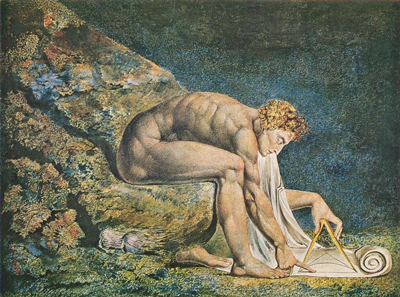
Click
here for commentary on Blake's painting of Newton.
The ego filled the
Romantic Poets with the same revulsion so they associated hope, beauty,
truth and love with spiritual states beyond the realms of science and
physics, which they associated with barbarism. In reacting thus they set
these states of being apart as ideals so they disconnected, disempowered
and deprived us of the physicality of existence.
In this they reflected the ego’s determination
that science is not a moral state of being but just a way of thinking.
Hope, beauty, truth and love are seen to be ideals beyond science and
not an imbuement of our daily lives. Such is the ingenious trickery of
the ego. (Smile). The ego has successfully defused and fractured our
insights into our natures as Information Beings. We experience this as a
loss of meaning. Despite their passionate attempts to convey meaning the
Romantic Poets came to be their own worst enemies - just as their modern
descendents in the Environment Movement are.
Reality is a paradox – by embracing the physical
nature of existence with its seeming constraints we are liberated. By
embracing the principles of physics we enjoy greater potential. By
conserving the potential of our symbols in accord with those principles
we are sustained in greater sensations of wonder and bounty. Potential.
Liberation. Wonder. Bounty. Perhaps this is true hope.
Acknowledgement and Dedication
This essay was inspired by a pre-Christmas posting
by the Post Carbon Institute
in 2011 that ended with the following quote from Vaclav Havel. It caused
me to reflect to reflect on the nature of hope and to wonder how
we could generate a practical guide to true hope.
The essay is my New Year offering to the world for 2012.
It is especially dedicated to my parents, Harry and Betty, and my
daughter, Bianca.
My thanks to the anonymous Internet
people who provided illustrations and quotes.
|
Vaclav
Havel (5 October 1936 – 18 December 2011)
"
Hope is a state of mind, not of the world. Either we have hope or we
don't; it is a dimension of the soul, and it's not essentially dependent
on some particular observation of the world or estimate of the
situation. Hope is not prognostication. It is an orientation of the
spirit, and orientation of the heart; it transcends the world that is
immediately experienced, and is anchored somewhere beyond its
horizons.... Hope, in this deep and powerful sense, is not the same as
joy that things are going well, or willingness to invest in enterprises
that are obviously heading for success, but rather an ability to work
for something because it is good, not just because it stands a chance to
succeed. The more propitious the situation in which we demonstrate hope,
the deeper the hope is. Hope is definitely not the same thing as
optimism. It is not the conviction that something will turn out well,
but the certainty that something makes sense, regardless of how it turns
out."
|
Recent
Reflections
5 October 2011
"An
Orwellian Climate"
Letters to
Australasian Chief Science Advisors explaining contemporary confusion in
climate care communication (Prof Peter Gluckman, Prof Ian Chubb, Prof
Tim Flannery, Dr Andrew Glikson )
15 September 2011
The
2011 New Zealand Election Campaign
(A
letter to New Zealand people alerting them to the dangers of the huge
hidden yet in-your-face advertising campaign promoting the sale of our
national assets.)
16 March 2011
Thought
Experiments re the Carbon Trading Ethos
(Originally
designed for the Office of the New Zealand Parliamentary Commissioner
for the Environment.)
26 February
2011
Letter to Radio
NZ
(Contains
reflections on broadcasts and ratings of the sustainability of a wide
range of its programmes.)
29
November 2010
The Joy in the Art of Civics
(Brief reflections on this state of being and the dangers of
Environmental Education)
24
November 2010
Celebrating
Our Climate
(Draft one: A climate education framework founded in the Sustainability
Principle of Energy offering an alternative vision of how we can
communicate the role of humans in Earth's climate processes.)
13
October 2010
Conversation
with NZ Minister of Education (Anne Tolley) re the
sustainability of the national education system. Read the Minister's
letter and reflections on the flaws inherent in the Education Ministry's
response.
4
November 2010
Letter
to the Office of the Parliamentary Commissioner for the Environment
Introduction to the Sustainability Principle of Energy with
discussion of the nature of science.
TOP
|